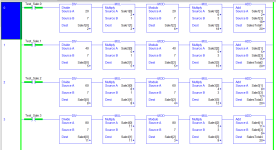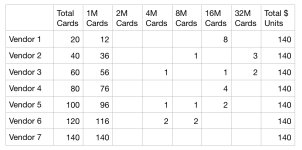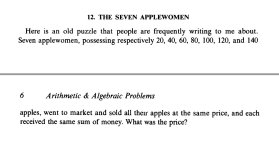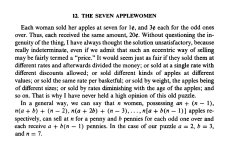The solution is that each vendor charged $1 for 7 memory cards and any left overs were charged at $3 each meaning each vendor received $20 (or whatever units you wish to use)
20 cards = (2 x 1) + (6 x 3) = 20
40 cards = (5 x 1) + (5 x 3) = 20
60 cards = (8 x 1) + (4 x 3) = 20
80 cards = (11x 1) + (3 x 3) = 20
100 cards = (14x 1) + (2 x 3) = 20
120 cards = (17x 1) + (1 x 3) = 20
140 cards = (20x 1) + (0 x 3) = 20

The solution posted would have worked if the stock levels from the 7 vendors were 8, 10, 12, 14, 16, 18, and 20
8 cards = (2 x 1) + (6 x 3) = 20
10 cards = (5 x 1) + (5 x 3) = 20
12 cards = (8 x 1) + (4 x 3) = 20
14 cards = (11 x 1) + (3 x 3) = 20
16 cards = (14 x 1) + (2 x 3) = 20
18 cards = (17 x 1) + (1 x 3) = 20
20 cards = (20 x 1) + (0 x 3) = 20
But I still think the different prices are not in keeping with the wording of the original queston "Each vendor sold all their memory cards at the same lowest price....". The "lowest price" here is $1, and to sell all at that price would nor work.....









